Iran's Government Says No Services For Students Without Hijab

Iran’s health and education ministries say their educational centers will not be providing services to students who do not observe the mandatory hijab.

Iran’s health and education ministries say their educational centers will not be providing services to students who do not observe the mandatory hijab.
In a message to congratulate the opening of universities in the new Iranian year on Monday, Deputy Health Minister Abbas Shirojan thanked the students who comply with dress code, and announced the universities of the health ministry will not provide services to students without hijab.
Meanwhile, the education ministry in a separate statement announced that women who do not comply with the compulsory hijab will not be allowed to attend classes.
During the nationwide protests in Iran following the death in custody of Mahsa Amini, universities have been the hotbed of protests with hundreds of students were arrested, in addition to targeted poisoning attacks on girls’ schools.
As the regime fights a losing battle against the wave of women participating in a nationwide hijab rebellion, hardliner regime supporters vow more strict measures.
In recent days, dozens of shops and malls where Iranian women continue to flout the regime’s mandatory hijab rules have been closed down across the country with dozens more women arrested.
In the past four decades women generally demonstrated their opposition to compulsory hijab by making their headscarves smaller.
Defiance of hijab rules as a form of civil disobedience ha grown across the country after the death the 22-year-old Mahsa Amini in custody of morality police in mid-September.
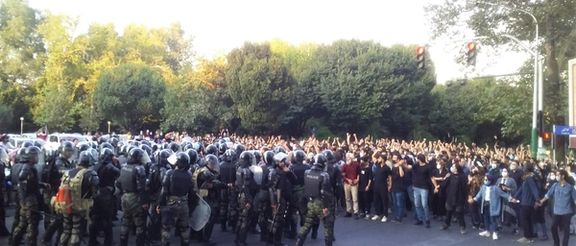
A leading reformist figure in Iran says the Iranian regime has shifted its point of reliance and source of legitimacy from the people to the military.
Mohsen Mirdamadi said in an interview with Etemad newspaper that revolutions and revolutionaries generally know what they don't want, but they do not have a clear idea about what they really want. Many revolutionaries typically find out after several years that many of their ideas and ideals cannot materialize. This is what happened in Iran after the 1979 revolution.
Mirdamadi said that two major shifts happened in Iran after the Islamic revolution. First, a school of thought that did not believe in the people's vote got the upper hand and tried to limit the power of votes and elections. Many of those in the Iranian government belong to this current.
The second shift occurred in the point of the regime's reliance. Gradually the regime began to rely on its military forces rather than on the support of the people.
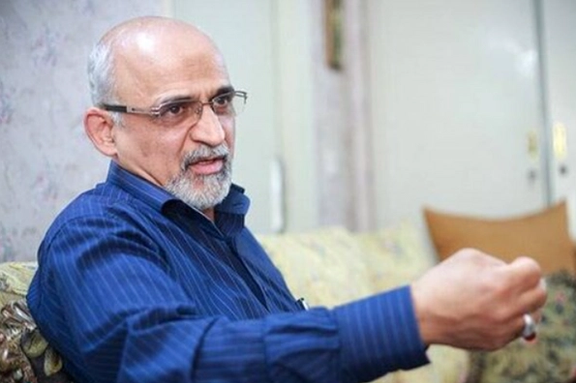
Elsewhere in the interview, Mirdamadi criticized the Iranian rulers' approach to enforcing hijab. He said that hardliners made hijab a security issue rather than a social issue about lifestyle. These changes, said Mirdamadi, led to the protests in the autumn of 2022 and plunged the country into its most important crisis in four decades.
Mirdamadi added that currently it is the military that makes most decisions in the economy, as well as domestic and foreign policies. The result is an unhappy population.
Like many other commentators, Mirdamadi also believes that recent protests were not simply the result of Mahsa Amini's death in custody. The protests were the outcome of accrued unhappiness and dissatisfaction. He added that the apparent lull in the street protests does not mean the movement has ended. This is a point also shared by others including leading conservative figure and regime insider Mohammad Reza Bahonar, who is a member of the Expediency Council.
Meanwhile, another conservative figure, lawmaker Mostafa Mirsalim in an interview with Khabar Online warned that the next parliamentary elections in less than a year is likely to be adversely affected by political corruption and political factions whose interests can be served only based on lack of transparency in the system and winning illegitimate concessions from the center of power.
In unprecedented comments, the hard-line conservative lawmaker acknowledged that most Iranians lost their hope in the system as a result of regime’s behavior and the only thing that can restore hope in the system is introducing social justice. However, he did not say how social justice can work in a political atmosphere overwhelmed by corruption and concessions for the privileged few and the progeny of men of power.
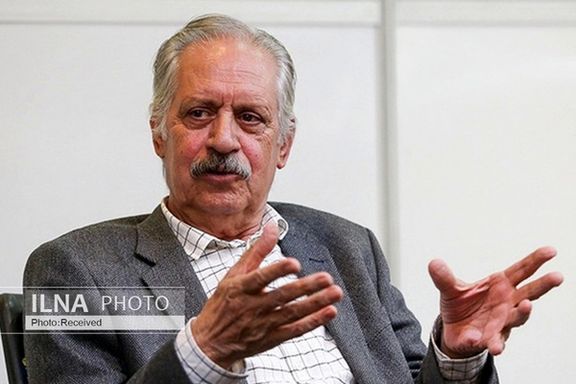
Meanwhile, international relations analyst Ali Bigdeli said in an interview with ILNA that hardliners who boasted about belittling the United States and turning the White House into a Mausoleum have brought about misery for Iran and made it a backward country.
Bigdeli advised that Iranian rulers should change their attitude toward the world and do away with emotionally charged statements against other country. He said reaching agreement with Saudi Arabia to restore ties is a good example of how flexible Iran needs to be in its foreign policy.
Nonetheless, Bigdeli slammed the Foreign Ministry for making ad hoc decisions rather than following a pre-defined strategic vision. He charged that the Foreign Ministry certainly lacks a roadmap about how to further Iran's relations with what he called "imperialist" countries, presumably the United States, China and Russia, and even the Persian Gulf littoral states. Lack of such a defined policy will do harm to Iran's interests, Bigdeli said.
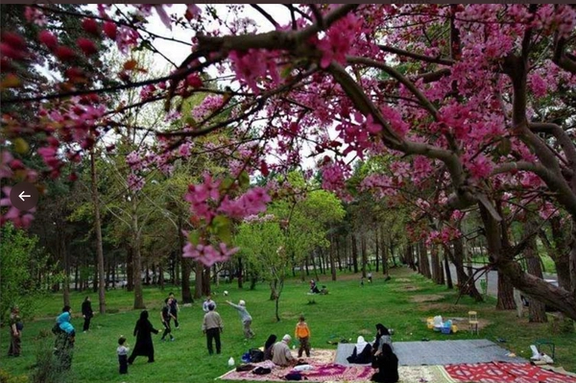
Iranian families celebrated the ancient Spring Picnic Day (Sizdabedar) on Sunday despite the government’s closure of some parks and Ramadhan restrictions.
“Out of respect for the month of Ramadan,” authorities closed parks and blocked roads to northern forests and other locations where people traditionally picnic on this day but videos posted on social media show huge crowds singing and dancing despite the restrictions and even chasing away the government-sponsored vigilantes from their picnic grounds.
In the city of Qazvin, capital of Qazvin province, for instance, the municipality said parks were closed until five in the afternoon, an hour and a half before iftar (the end of fasting day) “for the comfort of citizens and respect for Ramadhan.”
Armed police attacking merrymaking people with tear gas in northern Iran.
Parks were also closed in several other cities including the religious city of Qom and Rasht in Gilan province where many have flocked for the holidays. Even some museums and sightseeing locations were closed for the day in some places such as Kermanshah in western Iran.
Such restrictions did very little to stop people from gathering and dancing wherever they could but at least in one place, on the road to the touristic village of Masouleh in the forested northern mountains of the Caspian Sea region, armed police tried to disperse the merrymaking crowds with tear gas. Social media users said in Tehran the Basij militia tried to prevent people from entering some parks, but the crowds were too big and they had to give way.
This year, many women have taken the opportunity of the secular Nowrouz holiday season to demonstrate their opposition to the government by flouting their hijab and dancing in public as civil disobedience.
Authorities, who have been rattled by mass defiance, responded by shutting down businesses, hotels, cafes and restaurants where “hijabless” women were offered services or sang and danced, often alongside men. In some cases, such as at Kermanshah’s Taq Bostan historical site, authorities prevented “hijabless” women from entering.
People including “hijabless” women celebrating Sidebedar in Rasht in northern Iran
The 13th day of the holidays is called Sizdebedar, or more correctly Sizdah be Dar (casting off [the inauspiciousness] of thirteen].
The regime reluctantly tolerates some of the country’s ancient festivals such as the New Year (Nowruz) and other occasions such as Charshanbeh Souri (Last Tuesday of the old year) and Sizdebedar due to their extreme popularity. Nevertheless, after the Islamic Revolution of 1979 it renamed Sizdebedar as Nature Day because the religious establishment particularly opposed the “superstition” implied by it.
People chasing away government sponsored vigilantes in Anzali from their picnic site.
People should not remain home on this day to avoid the inauspiciousness of the number thirteen according to a tradition of obscure origins. So, they will go out and picnic wherever they can with food and music and dancing.
But this year, the Iranian New Year holidays (Nowrouz) coincided with the Islamic fasting month of Ramadan.
In Iran and some other Islamic countries eating, drinking, and smoking in public are strictly banned during the fasting month. Many Iranians who fast during Ramadan, and many others who do not, nevertheless, believe that such restrictions are pointless and even unfair.

The Israeli army said it downed an unidentified aircraft on Sunday that appeared to have crossed into its territory from Syria, as tensions simmer in the region.
The Israel Defense Forces (IDF) said in a statement the aircraft it downed did not pose a threat at any stage.
Israel has for years carried out attacks against what it has described as Iran-linked targets in Syria. According to the Syrian Observatory for Human Rights, Israel conducted six strikes in Syrian territory in March alone.
Israel conducted three missile and air strikes from Thursday to Sunday on targets in Syria housing Iranian IRGC and proxy military forces.
Iran announced that two of its "military advisers" in Syria were killed in these attacks and warned that it would retaliate.
Israel has been regularly attacking targets in Syria since 2017 to weaken Iran's attempts to strengthen its military presence in the war-torn country and build up a threat on Israel's northern borders.
Iran has considerable drone capabilities that it has used against US bases in Syria as recently as last month, killing a US contractor and injuring at least eight US servicemen.
Iran's government spokesman, Ali Bahadori-Jahromi, tweeted Sunday that Israel's "terrorist acts will not remain unanswered."
Iran had also called on Palestinian militants to "use the opportunity" of internal political tensions in Israel to harm the "Zionist enemy."

Iran hit a new record in annual inflation in the calendar year which ended on March 20, but pundits say the country will go into hyperinflation this year.
Hyperinflation is a very high and typically accelerating inflation, which quickly erodes the value of the local currency -- rial in this case -- while the prices of all goods increase exponentially. In such a situation, people move to minimize their holdings in the national currency and switch to more stable assets.
The Central Bank of Iran announced late in March that the annual inflation rate stands at 46.5 percent. Although the official inflation rate is usually less than what actual prices reflect, even a 46.5-percent inflation is among the highest in Iran in more than 30 years.
The bank did not disclose the point-to-point inflation for the last calendar month, which ended on March 20, but it provided the price index for the month, from which point-to-point inflation can be extracted. The price index was 794.3, which means a 64-percent point-to-point inflation rate compared to the corresponding period of the previous year at 484.6.
It is the second time Iran recorded such a figure since World War II. Considering the devaluation of the rial from 260,000 against one dollar to about 540,000 in the past 12 months, the inflation rate is expected to hit new highs in the coming months. Food prices have been rising much faster, with official figures indicating between 70-100 percent annual inflation for basic food items such as meat and dairy.
Hyperinflation is often associated with some form of stress to the government budget, such as socio-political upheavals, a collapse in aggregate supply of needed commodities, or obstacles in exports, all of which are seen in Iran’s economy.
There are different definitions for hyperinflation, with American economist Phillip Cagan defining it as when the monthly inflation rate exceeds 50 percent -- equivalent to a yearly rate of 12974.63% -- and the International Accounting Standards Board saying that it occurs when a cumulative inflation rate over three years approaches, or exceeds, 100 percent.
The Islamic Republic is currently facing the boldest antiregime protests since its establishment. Rising inflation may also lead to further protests.
The regime grapples with a serious revenue shortage mainly due to US sanctions and the Central Bank is printing more and more money which is aggravating the situation and most probably pushing the country towards hyperinflation.
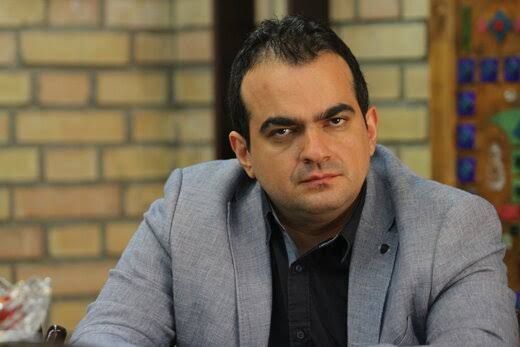
In an article published on April 1, Khabar Online website cited market analyst Siamak Ghassemi as saying that the data released by the government about market liquidity and money supply bears “important and dangerous information” about the country’s economy in the coming months.
“The growth rate of the monetary base has reached 38 percent and liquidity has reached 34 percent. This unprecedented gap means that the government is printing more money and making up for the budget deficit by heavily borrowing from banks and forcing them to borrow from the central bank,” he said.
Ghassemi highlighted that the sharp growth of the monetary base and the significant budget deficit as well as increasing lack of trust in the government’s ability to bounce back as well as the continued devaluation of the rial will put Iran's economy on the brink of a three-digit inflation rate or hyperinflation.
The former governor of Iran's central bank Abdolnasser Hemmati, who is among the outspoken critics of the current administration, also said last week that “in order to control inflation and rial’s exchange rate, the government should take serious measures to reverse growing liquidity.”
When the central bank resorts to printing money without sufficient economic growth or foreign currency revenues, the money supply increases fast, which in turn leads to more currency devaluation and inflation. The biggest immediate reason for printing money is government borrowing from the Central Bank of Iran to bridge its budget deficit estimated to be 50 percent.
The Islamic Republic has been struggling with high inflation since 2019, but the raging inflation in the past Iranian year was different from previous years. Last May, the government eliminated an annual food import subsidy of at least $10 billion, which immediately led to steep price increases. This was followed by a fall in the value of the national currency, making imports more expensive for the population. Iran’s ruler Ali Khamenei has dubbed the new year as “the year of controlling inflation”, a promise also repeated by President Ebrahim Raisi, but reminiscent of similar slogans in previous years.

A top British military adviser says Tehran is making "bad choices" through military cooperation with Moscow, warning the allegiance could lead to instability in the Middle East.
Air Marshal Martin Sampson, who is a veteran of 500 air combat sorties across the Middle East, said the two allies posed threats globally, including the provision of Iranian drones to Moscow, used in the invasion of Ukraine.
“Our friends in the region should be a little bit nervous about what comes back [to Tehran] in return for that support [for Russia],” he said, in an article in The National.
“We need to be aware of anything that flows in the opposite direction [from Russia], because Iran's practical behaviors have been destabilizing in the region. Everybody should be concerned about the transfer of technology,” he stated.
He stated that a country which aligns with an invading power such as Russia, is making a “bad choice”, the two nations becoming increasingly close since suffering crippling global sanctions, Iran for its nuclear program and Russia, for the war in Ukraine.
Britain's top military adviser stated that it is highly likely that Iran is receiving missile equipment and advanced drone technology from Russia in lieu of finances, given its current sanctioned status. It is also likely that Iran is seeking Russian support for its nuclear program, after the JCPOA talks broke down last year.
Since the uprising in Iran, Russia has provided the regime with communication-surveillance capabilities as well as eavesdropping devices, advanced photography devices and lie detectors, as it supports the brutal crackdown on protesters and civilians.